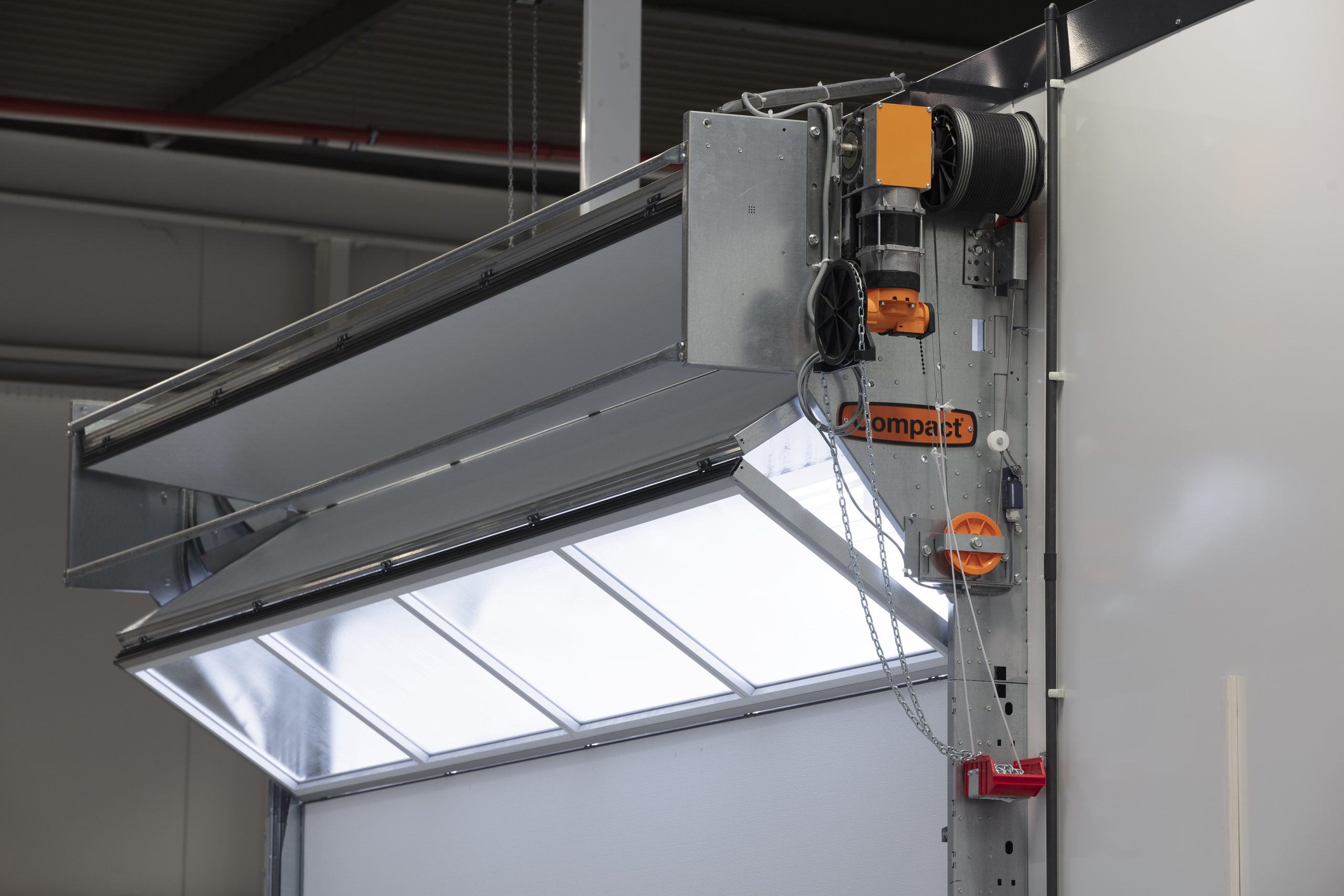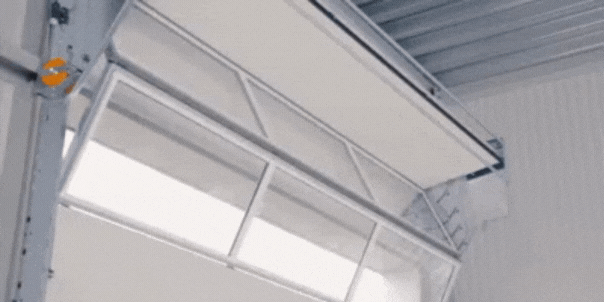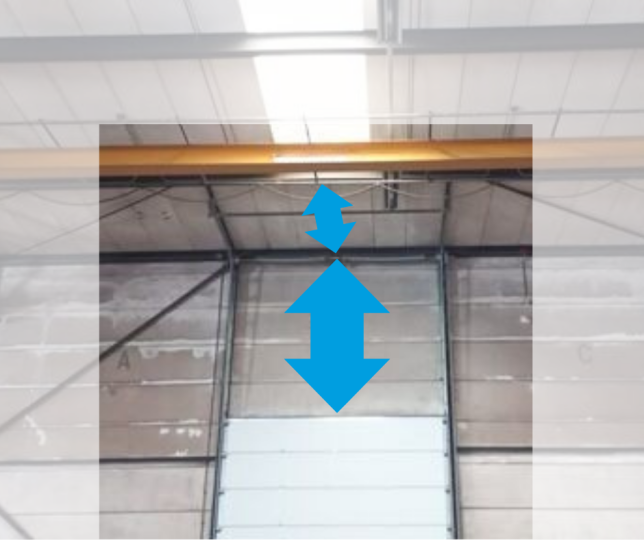When planning an industrial or commercial building, one of the first technical questions is: how much clearance do you need for an overhead door? Clearance refers to the space required above, beside and behind the door for smooth operation. Traditional overhead doors often demand significant ceiling space for tracks and torsion springs — but with the Compact door, things are much simpler.
Typical clearance for traditional overhead doors
A standard overhead door usually needs 300–600 mm of headroom above the opening, plus extra space for the tracks and motor. Larger, insulated or automated models may require even more. You’ll also need about 100 mm on each side for the vertical tracks and additional backroom space equal to the door height plus 450–600 mm for horizontal tracks.
This setup can limit ceiling use, especially if you have lighting, cranes or ventilation ducts above the doorway.
The Compact door: minimal clearance, maximum freedom

The Compact folding door offers a major advantage: it folds its insulated panels directly above the opening, requiring no ceiling tracks at all. This keeps the entire ceiling area free for other installations such as sprinklers, lighting or ventilation systems.
Required space for installation
The Compact door’s folding system is remarkably efficient, but exact measurements depend on the door size and motor position. Here’s a general overview of what you need:
- Headroom (above the opening):
- Doors up to 3080 mm high → 420 mm
- 3081–4300 mm → 520 mm
- 4301–5520 mm → 630 mm
- 5521–6740 mm → 770 mm
- 6741–7960 mm → 890 mm
- Additional headroom (depending on configuration):
- Top motor → +285 mm
- Front motor → +50 mm
- Protective cover → +60 mm
- Pedestrian door → +90 mm
- Side clearance:
- Each side → 90 mm for the rails
- Motor side → 320 mm in total
- Depth of the door package:
- Standard → 730 mm
- With front motor → 970 mm
These dimensions make the Compact door suitable for almost any industrial application — even in buildings with limited headroom or complex layouts.
For more detailed measurements, including motor positions and rail thickness, you can refer to the full Compact door dimensions chart on our website.
Why clearance matters
Insufficient clearance can cause installation issues, interfere with ceiling-mounted equipment, or restrict door movement. Choosing a door that needs less space not only simplifies installation but also gives you more design flexibility in how you use your building.
Conclusion
So, how much clearance do you need for an overhead door? Traditional overhead doors require at least 300–600 mm of headroom, plus backroom and side space for tracks and springs. The Compact door, however, folds above the opening and needs significantly less space, with clear, predictable installation dimensions.
If you want to maximise space, improve insulation and keep your ceiling completely free, the Compact door is the smart choice. For all detailed technical specifications and installation measurements, visit our Compact door dimensions page.

